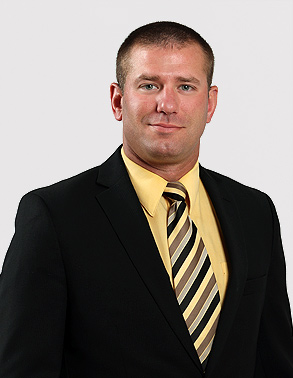SHOULDER DYSTOCIA IN THE DELIVERY ROOM
 Shoulder dystocia is damage to an infant that occurs when its shoulders get stuck in the mother’s birth canal. While medical professionals should be able to handle the problem without injuring the mother or child, this does not always happen. Shoulder dystocia cases can be due to negligence as can the subsequent injuries. Between June 2004 and October 2008, the Pennsylvania Patient Safety Authority received 316 reports involving shoulder dystocia. In 124 (39%) of these reports, neonatal injuries were identified, and these included deaths.
Shoulder dystocia is damage to an infant that occurs when its shoulders get stuck in the mother’s birth canal. While medical professionals should be able to handle the problem without injuring the mother or child, this does not always happen. Shoulder dystocia cases can be due to negligence as can the subsequent injuries. Between June 2004 and October 2008, the Pennsylvania Patient Safety Authority received 316 reports involving shoulder dystocia. In 124 (39%) of these reports, neonatal injuries were identified, and these included deaths.
If your child has suffered a shoulder dystocia injury due to negligence or preventable medical errors made by doctors, nurses, midwives, paramedics, anesthesiologists or hospitals, you may be entitled to compensation. The experienced and compassionate birth injury attorney Clifford Rieders knows what you are going through. He can help you investigate the cause of your child’s disability and determine the options you may have to secure lifetime benefits.
What are the Causes of Shoulder Dystocia?
Shoulder dystocia is a preventable childbirth complication that, if not diagnosed quickly, can result in serious harm and permanent injury. Shoulder dystocia is caused when the baby’s shoulder becomes stuck behind the mother’s pubic bones. The baby’s head is delivered, but the shoulders are still impacted inside the mother. When this happens, shoulder dystocia may result if its potential is not diagnosed quickly and the doctor does not take appropriate measures.
There are factors that increase the risk of shoulder dystocia:
- The mother is obese, of advanced age, has abnormal or small pelvic anatomy, short stature, or gestational diabetes.
- The baby is large or not in the best position for delivery.
- The labor is induced.
- Shoulder dystocia occurred in a previous labor.
- It is necessary to use a vacuum or forceps to assist birth.
What Are Injuries From Shoulder Dystocia?
The most common injuries associated with shoulder dystocia include:
- Fractures of the clavicle or humerus bones.
- Brachial plexus nerve damage – These nerves supply the sensory and motor components of the shoulder, arm and hands. Injury to the nerves may result in Erb’s palsy (also called Klumpke’s palsy or Brachial plexus palsy), and permanent loss of finger, hand or arm function.
- Birth asphyxia due to lack of oxygen, which may cause brain damage.
- Fetal lacerations and hemorrhages.
- Fetal death.
The mother can also be damaged, experiencing problems such as hemorrhaging, lacerations, tearing or bruising of the cervix, rectum, or vagina, bruising to the bladder and uterine rupture.
How Injuries Can Be Prevented
While it is difficult to accurately predict or prevent shoulder dystocia, it is important to recognize risk factors. By doing so, healthcare providers can be prepared, and injury can be avoided by appropriate medical attention. Medical interventions might include performing an emergency Caesarean section or using various approved maneuvers to get the baby into the proper position for birth.
Before delivery, both maternal and fetal risk factors should be examined and a thorough patient history should be taken, including maternal age, birth weight of previous infants, and whether forceps and/or vacuum extraction were used in previous deliveries. Prenatal laboratory and diagnostic studies including glucose screening or history of maternal diabetes also show warning signs. Fetal ultrasound reports can be used to estimate fetal weight and size.
During delivery, care should include the prompt identification, quick diagnosis, and management of shoulder dystocia, including external and/or internal maneuvers of the child. If the maneuvers do not work, an emergency C-section may be necessary. Proper documentation should provide all healthcare personnel, patients, and their families with a clear understanding of the events that led to the discovery and resolution of the shoulder dystocia or any other obstetric emergency.
Trust Our Firm for Honest Answers
Healthcare providers need to meet the legal standard of reasonable care or they can be held financially accountable for damages to help pay for the expensive and lengthy medical care that the injured baby may need. If professional negligence caused you or your child to be injured, if you had any risk factors associated with shoulder dystocia that your doctor failed to recognize, or if you were not monitored appropriately and the shoulder dystocia was not diagnosed and treated correctly, you may be able to file a lawsuit for medical malpractice.
Whether in settlement negotiations or pursuing a favorable trial verdict, our experienced Pennsylvania birth injury attorney Clifford Rieders is knowledgeable about the highly technical, specialized field of medical malpractice law and is thoroughly prepared and committed to achieving a just outcome. With our sizeable staff, we offer strength in numbers while providing top-notch personal service.
Do not delay. Consult Cliff Rieders by calling 1-877-962-9411 for a free consultation, or use our online contact form.
Based in Williamsport, Rieders, Travis, Dohrmann, Mowrey, Humphrey & Waters serves clients throughout Pennsylvania, providing a free consultation on all injury matters. More than that, we offer you experience, knowledge, compassion, and a long history of results.

 Cliff Rieders is a Nationally Board Certified Trial Lawyer practicing personal injury law. A large part of his practice involves multi-district litigation, including cases related to pharmaceuticals, vitamin supplements and medical devices. He is admitted in several state and federal courts, as well as the Supreme Court of the United States. Rieders is the past regional president of the Federal Bar Association and is a life member of the distinguished American Law Institute, which promulgates proposed rules adopted by many state courts. He is a past president of the Pennsylvania Association for Justice, formerly Pennsylvania Trial Lawyers Association. As a founder of the Pennsylvania Patient Safety Authority, he served on the Board for 15 years.
Cliff Rieders is a Nationally Board Certified Trial Lawyer practicing personal injury law. A large part of his practice involves multi-district litigation, including cases related to pharmaceuticals, vitamin supplements and medical devices. He is admitted in several state and federal courts, as well as the Supreme Court of the United States. Rieders is the past regional president of the Federal Bar Association and is a life member of the distinguished American Law Institute, which promulgates proposed rules adopted by many state courts. He is a past president of the Pennsylvania Association for Justice, formerly Pennsylvania Trial Lawyers Association. As a founder of the Pennsylvania Patient Safety Authority, he served on the Board for 15 years.





